Through food, language and dance, Latinos preserve their unique cultural identities
At Anahuacalmecac International University Preparatory, ceremonial dances that hearken back to the students’ indigenous ancestral traditions are a crucial part of their education.
As the K-12 students began school on a recent Friday, they participated in a dance that told the story of the ancient Aztec hunting communities, who traveled under the cover of night. Like those hunters focusing on their targets, the students were encouraged to think of their own.
“You have goals in life and you’re trying to reach that goal, and you’re shooting that arrow to try to aim for that target,” an instructor said.
“It’s really important that we dance with intention and that your heart is connected to what you’re doing,” said another.
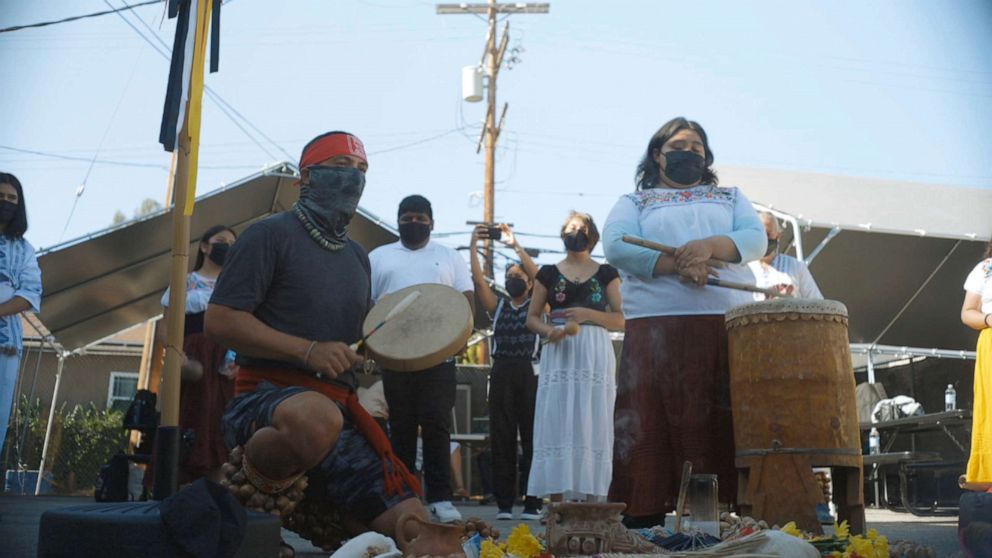
Some might say intentionality is a virtue at Anahuacalmecac Prep, where the students hope to build a successful future and a deeper connection to their ancestral heritage. The public charter school opened nearly 20 years ago in Los Angeles, and since then, has remained committed to its mission to teach academics alongside indigenous culture and wisdom.
“We think that a clear vision of the future comes from understanding our past,” Marcos Aguilar, the school’s executive director, told ABC News.
Watch "Soul of a Nation Presents: Corazón De América | Celebrating Hispanic Culture" on Friday, Sept. 17, at 8 p.m. EST on ABC.
As Hispanic Heritage Month begins, many people who’ve descended from Latin American countries are keeping their history alive through the languages they speak, the food they cook, and the music and dance that they perform. They’re tapping into their ancestral history by rejecting catchall terms meant to describe their ethnic group in favor of more accurate descriptions of their family’s home countries. And they’re embracing the intersectionalities of their identites, which they live with every day.
“It’s important for our students to know where they come from, and that’s what that identity should reflect,” Aguilar said. “When we use labels like Hispanic and Latino and even Latinx, we’re erasing the history of each family, of each nation and of each person in a way that is part of the overall erasure of our history.”
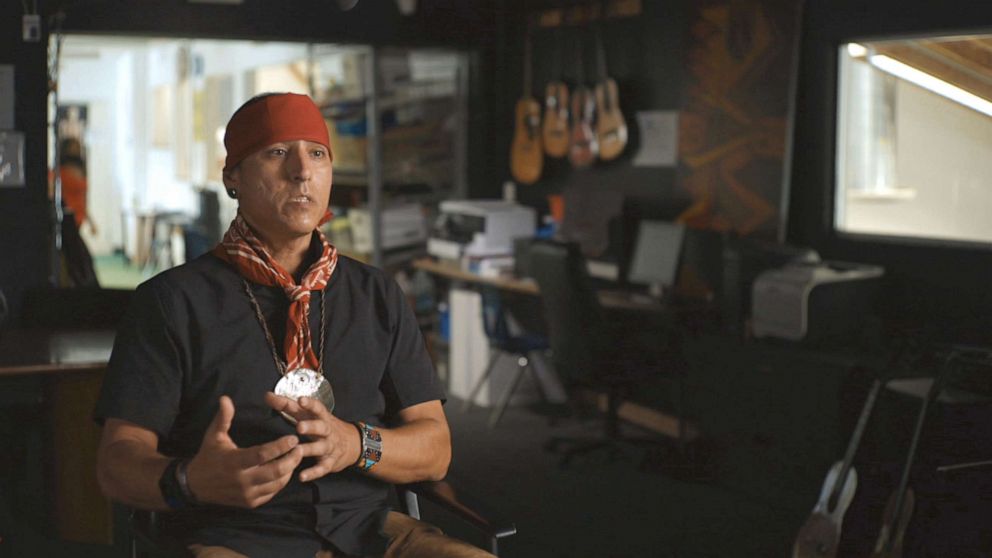
Curtis Acosta, founder and executive director of the Acosta Educational Partnership, says there’s a “thirst” among young Latinos to “figure out who [they] really are as people living in this country because it’s complex. … The young folks that I’m seeing, especially in schools right now, they want to know the whole thing, as much as they can, and they want to have the space to do it.”
Aguilar says the school was opened with the goal of creating that safe space where the students feel respected for having native names or wearing their hair in native styles, among other adopted aspects of their culture.
“For me especially, in the school, I’ve been so fortunate to never have to deal with any kind of discrimination,” Malinalli Diaz, a student at the school, told ABC News. “And it’s something that I really appreciate because especially my parents, hearing their stories on what they had to go through in high school, it’s not OK. It made me grateful to have an environment like this, where it’s not something I have to fear.”
“Being able to know more about my culture and know more about my people and be rooted in, that’s really what helps me grow,” said Axayacatzi Kuauhtzin, another student. “A tree can’t grow unless it has roots, so being able to know about my family, about my history, about my people really helps me develop and be able to express myself better — express my identity better.”
At Anahuacalmecac Prep, the students identify as Nahuatl, Mexican, Zapotec, Mixtec and more. They identify themselves even more specifically than nearly half of people with Latin American heritage in the U.S., who said in a 2019 Pew Research survey that they identify themselves by their country of heritage. By comparison, just under 40% of people surveyed said they identified themselves as Hispanic or Latino.
“I think they’re dated,” said Rosa Clemente, a doctoral candidate at the W.E.B. DuBois Department of Afro-American Studies at UMass-Amherst, of the terms. “They don’t speak to race or ethnicity. They don’t speak to the homes we come from. Those terms just don’t speak to who we are at all.”
“The term ‘Hispanic’ comes from the fact that we were Spanish-speaking,” said Xochitl Oseguera, vice president of MamásConPoder, a social welfare nonprofit. “I believe it’s very much a term based off our colonial past. I prefer to use Latina and Latinx to be inclusive because it gets freed of the colonialism in that word. Latinx is a term that is gender-neutral, inclusive and that has evolved from the phonetic use of the 'X' in the Nahuatl language.”
More than 250 students attend Anahuacalmecac Prep, where they have the opportunity to study Spanish as well as the Aztec language of Nahuatl. It’s a curriculum intended to serve the LA community, where some families’ primary languages aren’t Spanish, but rather one of a Latin American indigenous group that came before.
“Nahuatl is a maternal language as well as Spanish for our students and in our community,” Aguilar said. “It’s one of, I would say, a dozen native languages that are spoken by several communities in Los Angeles County, and one of 68 native languages in Mexico that are alive and well.”
‘Dance is almost everything in my life’
Danys “La Mora” Pérez Prades, of New York City, also believes people cannot know who they are unless they look to their past. She’s preserving her own Afro-Cuban heritage through the Oyu Oro Afro Cuban Experimental Dance Ensemble, of which she is the founder, artistic director and choreographer.
“Through dance, I can preserve the history of my lineage, of my identity, of my people,” Perez Prades told ABC News. “Through dance, I can tell people who I am and where I’m coming from. Through dance, I can preserve the history of my nation.”
“My dance is a weapon for me to fight, to preserve what we have,” she added. “I believe that if we don’t preserve our culture, we lose everything that we have and what we are. … When you don’t have a history, you don’t have an identity.”
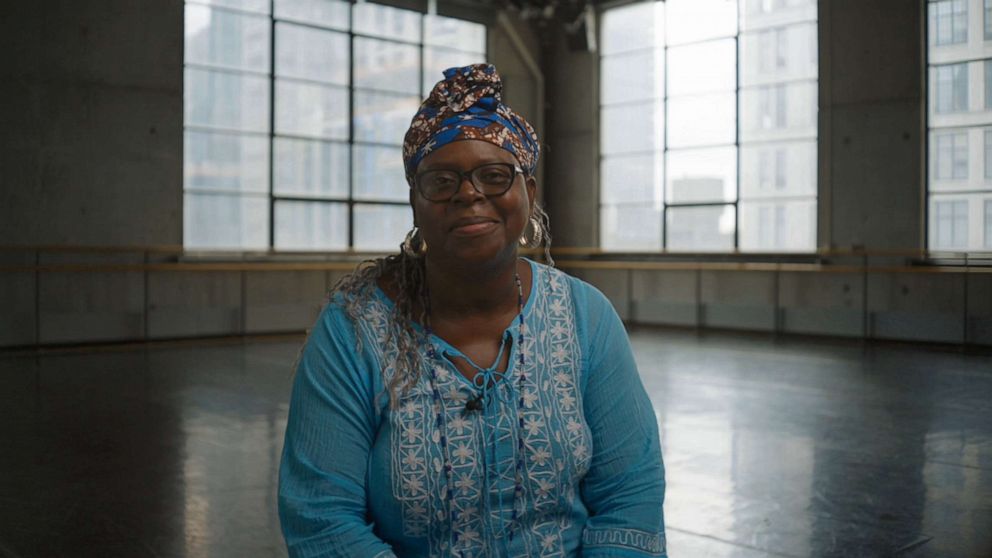
Perez Prades’ dance company performs to the beats and rhythms of their African ancestors who were brought to Cuba — among other countries in the Americas — as slaves. During a rehearsal for their upcoming show “Esperanza” (“Hope”), Oyu Oro showed how it blends contemporary movements like those in ballet with African influences, such as the swaying of the torso and the stomping of the feet.
The dance company’s mission is to “preserve our identity, our culture, our traditional dance [and] our folklore,” Perez Prades said. After preservation, she says her mission is to expose the culture to others. “Because I want people to know I exist. I want people to know who I am because what you don’t know, you don’t respect, and I want respect.”
A family affair, Perez Prades’ husband, jazz musician Francisco Mora Catlett co-founded Oyu Oro and is the musical director of the group. He says music has always “reflected” his identity and ancestral heritage, especially when it comes to drumming.
“I was brought into drums early in my life. I’m 74 years old and I’ve been playing professionally since I was 16. … The drums identify as life to me. The heartbeat, the rhythm, the center of universal rhythm and exposure of life, fire, the elements of nature. That’s all that the drum means to me,” he said.
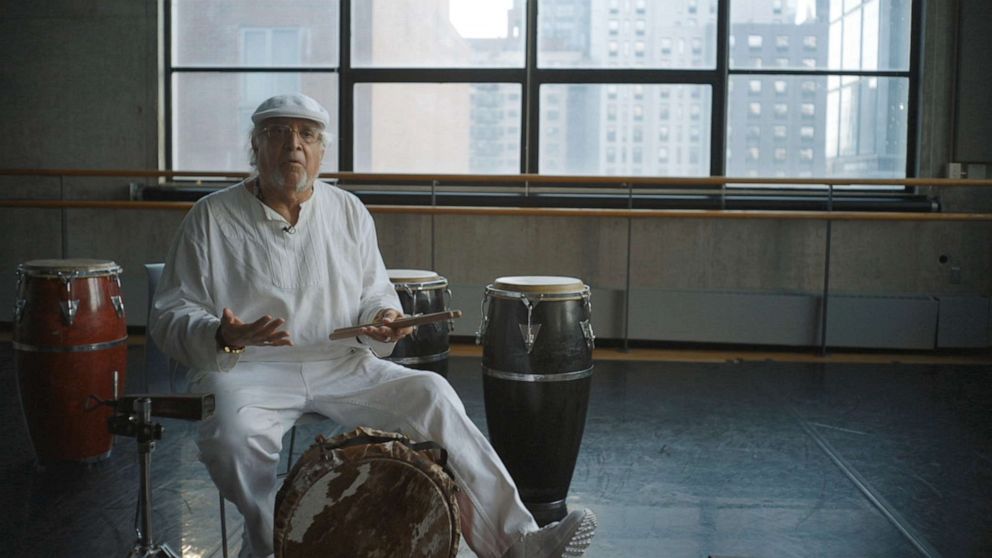
He drew connections between the drum rhythms used in a wide range of popular music today and their African ancestry: the clave rhythm, which he said comes from Ghana and Burkina Faso and moved to Latin America before it was adopted more widely.
“They brought slaves to work everywhere. All of Latin America is the same story, so they brought their culture with them. … This same rhythm, it’s in the huapango in Mexico. It’s also in Brazil in the Samba.”
Mora Catlett, who was born in Washington, D.C., is the son of an African American sculptor and Mexican muralist. He said he grew up with the likes of painters Diego Rivera and Frida Kahlo, who gave him the space and encouragement to embrace his intersecting identities.
“It was never choosing. It was a complete experience because they admired Black culture. They admired indigenous people’s culture. They admired Mexican culture,” he said. “They were universal minds that worked with a tremendous background of humanistic ideas within our society.”
Perez Prades says she’s a proud Afro-Cuban but that the overlapping of her identities sometimes confuses people. She can be, and is, both Black and Hispanic, she asserted.
Her daughter, Liethis Hechavarria, who also dances with Oyu Oro, said she has experienced the same misunderstandings. And like her mother, she said she’s never had to choose between the different pieces that make up who she is.
“For me, it’s all together,” she told ABC News. “It’s one body. … I would never divide that; it all comes together for me.”
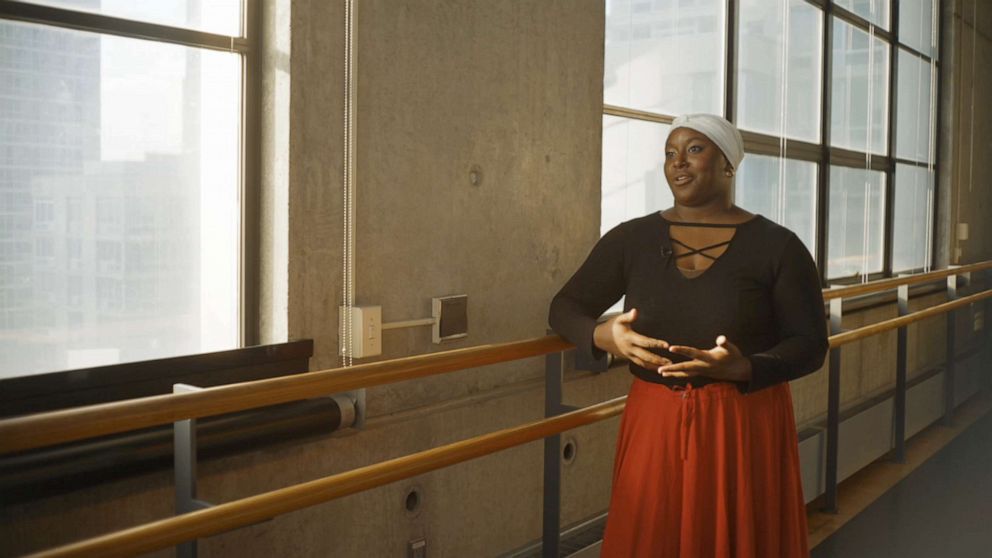
“I’ve seen people … and they don’t feel related with their culture,” she added. “[They say] ‘I’m Latino’ or ‘I’m African’ or ‘I’m American,’ but they don’t put it together. And I feel that’s maybe because they’re not aware of the history… It’s something that really happens and it’s sad, but that’s why I love to do my art.”
As she swung her hips around and waved her skirt, Hechavarria said there have always been African influences in Latin dances, like the Cuban Rumba.
“All this flavor, right, that is Africa, and that is what really makes me grounded when I dance,” she said. She then performed what she called a Bantu movement, swinging her arms and pumping her chest. “All that power, all that beauty within the movement is important to me, and it relates me with Africa and with Cuba. I would never be able to separate that.”
Hechavarria said “there’s a lot of Black in Latin America,” and that it’s important for people to acknowledge that they can coexist.
“It’s been so ingrained in our minds for generations,” she said. “For so long … [people said], ‘You’re Latino. You’re lighter. You’re not supposed to be too dark.’ And it’s like, you are Black. Africa is there.”

Hechavarria believes the Black Lives Matter movement has helped to bring awareness to the connections that exist between people’s Latin American heritage and the African diaspora. It’s a connection that Clemente says has long existed and still exists today.
“With the summer protests, when people would be like, ‘I can’t believe I’ve never seen so many Latinos,’ I’m like, ‘Where have you been looking?’ We’ve always been part of the struggles of this country. We’ve always been in solidarity with each other, especially around racial justice, economic justice and gender justice.”
Hechavarria says that while the wrongs that her ancestors experienced cannot be reversed, people can work to “renew ourselves now.” She said that in her own work as a teacher, she’s made an effort to help her students understand that there’s nothing wrong with having curly hair or a darker skin tone.
“I think now is the time that people are actually being conscious about like, ‘Oh, I’m Afro-Dominican,’ ‘Oh, I’m Afro-Puerto Rican.’ ‘I’m Afro-Cuban.’ I love that… They’ve seen the reality. They are kind of understanding more of the story.”
‘Food lets us know who we are’
It’s through the process of cooking foods passed down through the generations that Claudia Serrato cultivated an understanding of her Purapecha, Huasteca and Chicana roots.
“As a child, I was Mexican. I didn’t understand that how I was engaging with my mother in the kitchen was really me recreating, owning and loving my indigenous roots,” Serrato, an indigenous culinary anthropologist, told ABC News. “That wasn’t spoken about because the quest was to Americanize me through different methods of acculturation; different methods of assimilation. And it wasn’t until … my teens that I realized I had a split identity. I wasn’t just a Mexicana, but I was also ‘American,’ and I had to navigate that for myself.”
Serrato says her focus on indigenous foods came out of a desire to understand her own identity “and why it’s even important to know who I am.”
“If we’re not cultivating and cooking and preparing cultural heritage foods, then not only do we lose the culture, but we also lose the sense of identity that comes with that,” Serrato said.
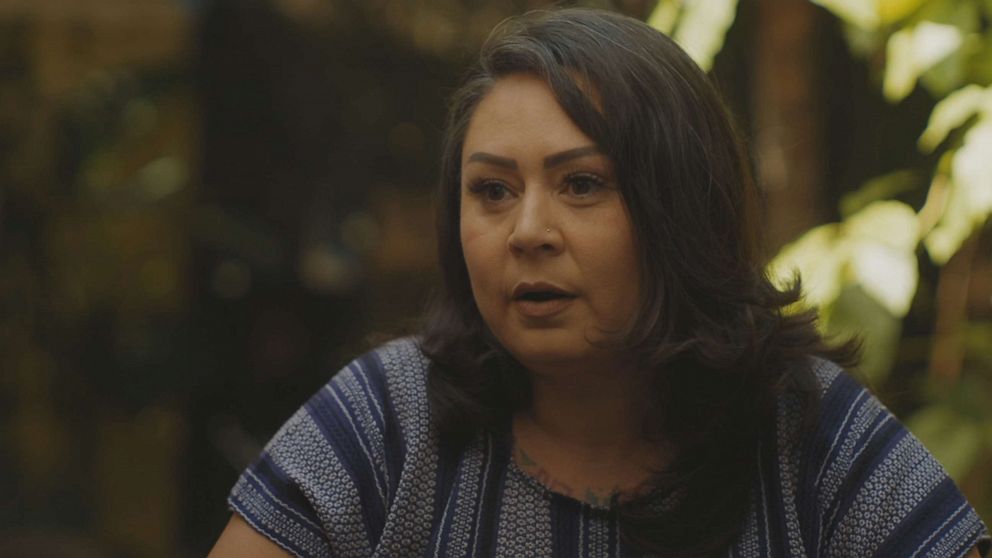
“And then what happens,” she added, “not only would the food disappear, but we’re also talking about that generational memory. So, the songs, the ceremonies, the agriculture, the recipes and the flavors. And that’s what keeps us alive. It’s what keeps us going. What makes us resilient is that sense of identity that is rooted and grounded in food.”
Serrato spoke to ABC News while preparing atole, a millennia-old warm drink that is sweet, creamy and made primarily with corn. “Food is sacred,” she said, and rather than buying the ingredients pre-made, she believes she’s able to engage with the food on a deeper level by using appliances like a hand-cranked corn mill and a mortar and pestle that she says was made with volcanic rock and passed down to her through the generations.
In doing so, she says she is reminded of her mother, her grandmothers and her ancestry.
“As a child, there was one food that was given to me every day, and it was atole. … I didn’t know what life was without atole,” she said. Preparing the drink is a constant reminder to her of all the things she’s accomplished and is a way to honor the child within. “This is home to me, because food has that power. … Food has that power to bring you home.”
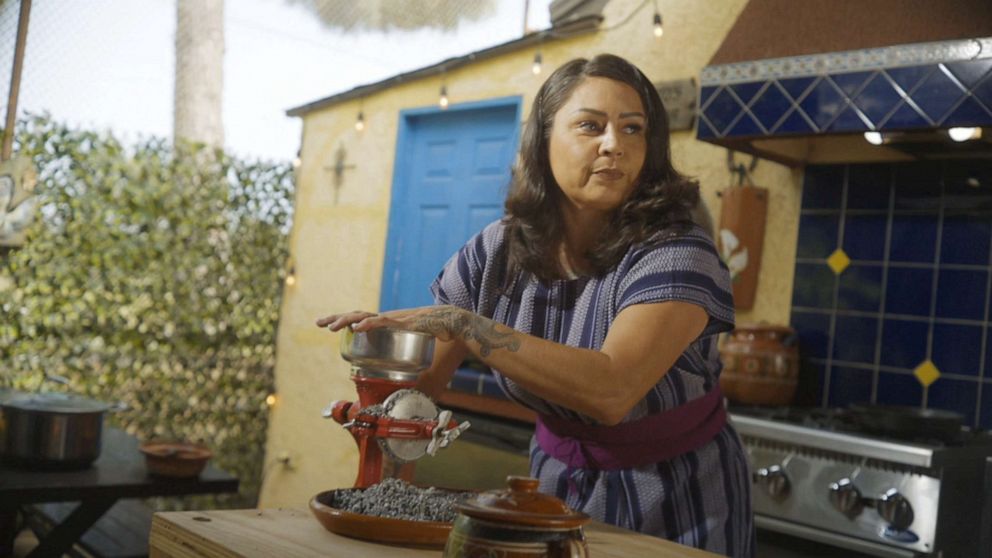
Serrato believes that by going back to the foods that our ancestors ate, we can “decolonize” our diets. She pointed to processed foods as a symbol of colonization and one of the main culprits in the health disparities that exist among Latinos. But even traditional foods, she says, have been modified, and therefore colonized, in some ways.
“Food that has not been tainted, that is food that has not been colonized,” she said. “So, we’re talking about non-GMO blue corn maiz. We’re talking about wild amaranth. … There’s this idea that tamales are supposed to have beef, chicken and pork. But if we understand the history of the tamale, then we understand … those were brought with the colonizers.”
She said that decolonizing a tamale could mean using bison, deer or quail meat, or even making it plant-based. “When we decolonize the tamale, we also engage in those processes of decolonizing ourselves,” she said.
To Serrato, food is medicine not just to the person eating it, but to the world.
“It has the capacity to remind us and to revitalize our ancestry — our genetic memory,” she said. “And what it does when we’re consuming these foods: not only is it healing and providing the type of nourishment that is needed for our bodies, particularly as indigenous peoples, but it also contributes to the healing of the land and the elements that surround that. … We’re talking about an ecological healing. We’re talking about something bigger and larger than us.”



